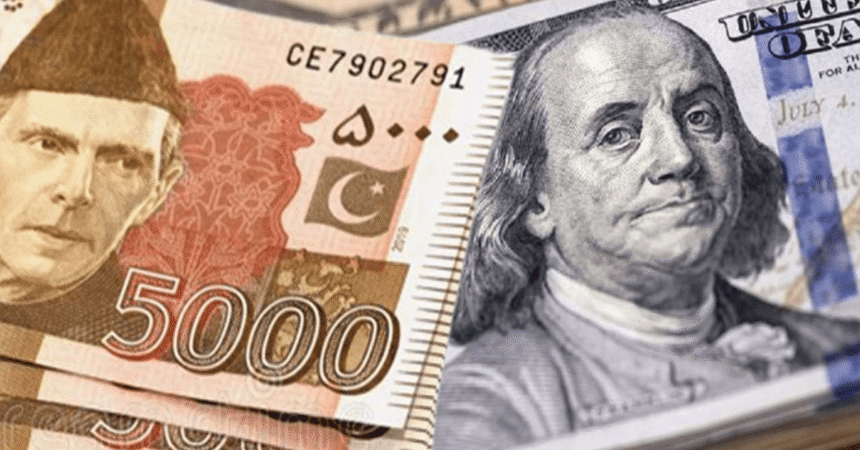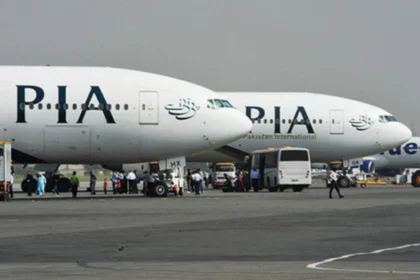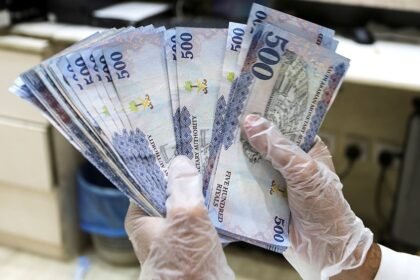In recent developments within Pakistan’s financial landscape, the Pakistani rupee has shown significant resilience against the US dollar, closing at Rs277.60 in interbank trading after a decline of nine paisas. This improvement comes in the context of a broader economic narrative that includes positive remarks from the International Monetary Fund (IMF) Managing Director Kristalina Georgieva regarding Pakistan’s economic recovery and growth trajectory.
Understanding the Current Currency Dynamics
The interbank exchange rate is a critical indicator of a country’s economic health, reflecting investor sentiment and the balance of trade. The recent appreciation of the rupee against the dollar suggests that the market may be responding favorably to recent economic policies and reforms implemented by the Pakistani government.
Historically, fluctuations in currency value can be attributed to multiple factors, including inflation rates, foreign direct investment, trade balances, and monetary policy. In Pakistan’s case, the stabilization of the rupee is a welcome change, especially considering the pressures that the economy has faced in the past.
The Role of the IMF and Economic Reforms
The recent approval of a $7 billion loan program by the IMF has been a significant development for Pakistan. This loan aims to support the country’s fiscal balance and facilitate economic reforms crucial for long-term stability. In her statements, Georgieva acknowledged the efforts of the Pakistani government in navigating the economic challenges and highlighted the importance of implementing sound policies.
One of the key aspects of the IMF program is the emphasis on increasing tax revenue from wealthier individuals and businesses. This move aims to create a more equitable tax system that reduces reliance on external borrowing and promotes sustainable economic growth. The government’s commitment to enhancing tax compliance and addressing fiscal deficits is seen as a crucial step toward financial stability.
Economic Indicators and Growth Prospects
Georgieva’s comments regarding the positive indicators in Pakistan’s economy, such as improving growth rates and declining inflation, paint an optimistic picture. The reduction in inflation is particularly noteworthy as it directly affects the purchasing power of consumers and overall economic sentiment.
- Economic Growth: Preliminary reports indicate that Pakistan’s GDP growth is on an upward trend. This resurgence can be attributed to various sectors, including agriculture, manufacturing, and services, rebounding from past challenges.
- Inflation Trends: Controlling inflation is vital for economic stability. A decrease in inflation rates not only improves the cost of living for citizens but also encourages consumer spending and investment.
- Foreign Investment: Positive sentiments from the IMF and improved economic management are likely to attract foreign direct investment (FDI). Investors seek stable environments, and signs of recovery can enhance Pakistan’s appeal as a destination for investment.
Challenges to Economic Recovery
Despite the positive developments, several challenges remain that could impact Pakistan’s economic recovery. These challenges require careful navigation to ensure that the gains achieved are sustainable.
- Political Uncertainty: Political stability is a crucial factor for economic growth. Ongoing political tensions can lead to uncertainty, which may deter investors and disrupt economic reforms. Ensuring a stable governance framework is essential for maintaining momentum in the recovery process.
- External Debt Management: Pakistan’s external debt burden is a significant concern. The need to service debt while implementing development initiatives creates a delicate balancing act for policymakers. Effective management strategies will be critical to avoid potential crises.
- Structural Reforms: Beyond immediate fiscal measures, Pakistan needs to focus on structural reforms that address long-term issues such as energy shortages, education deficiencies, and healthcare improvements. These reforms are vital for fostering a competitive and resilient economy.
The Importance of Public Sentiment and Economic Engagement
Public perception plays a crucial role in economic recovery. As the government implements reforms, engaging with citizens to explain the benefits of these changes can foster trust and support. Transparent communication about the impact of tax reforms, for example, can help mitigate resistance and promote a culture of compliance.
Encouraging public participation in the economic narrative can also enhance the government’s legitimacy. Initiatives that highlight how reforms directly benefit citizens—such as improved public services or enhanced social safety nets—can bolster support for the government’s policies.
International Context and Comparisons
Comparing Pakistan’s economic trajectory to that of other nations can provide valuable insights. Many countries in South Asia have faced similar challenges in managing currency stability and fostering growth. By examining the successes and failures of regional peers, Pakistan can adapt its strategies to better address its unique circumstances.
For instance, countries that have successfully navigated similar economic challenges often emphasize the importance of diversifying their economies, investing in human capital, and enhancing infrastructure. Pakistan can take lessons from these experiences to create a more resilient and robust economic framework.
The Path Forward: Strategic Recommendations
As Pakistan moves forward, several strategic recommendations can be considered to enhance economic stability and growth:
- Strengthening Institutions: Building strong, transparent institutions is vital for implementing reforms effectively. Strengthening the capacity of tax authorities and regulatory bodies can enhance compliance and governance.
- Promoting Investment: Creating a conducive environment for foreign and domestic investment is crucial. Streamlining business regulations and offering incentives for investment in key sectors can stimulate economic activity.
- Diversifying the Economy: Reducing reliance on specific sectors can enhance economic resilience. Investing in technology, renewable energy, and sustainable agriculture can position Pakistan as a competitive player in emerging markets.
- Engaging in Regional Cooperation: Strengthening ties with neighboring countries can enhance trade and investment opportunities. Collaborative efforts in sectors such as energy and infrastructure can create synergies that benefit the region as a whole.
- Fostering Innovation: Encouraging innovation and entrepreneurship can drive economic growth. Supporting startups and small businesses through access to finance and mentorship programs can stimulate job creation and economic dynamism.
A Cautiously Optimistic Future
The recent strengthening of the Pakistani rupee against the US dollar, coupled with positive remarks from the IMF, signals a cautious optimism about the country’s economic future. The implementation of the $7 billion loan program and ongoing reforms have laid a foundation for potential recovery.
However, the path ahead is not without its challenges. Political stability, debt management, and structural reforms will be critical for sustaining the gains achieved. By focusing on transparency, public engagement, and strategic planning, Pakistan can navigate its way toward a more resilient and prosperous economic future.
#PakistaniRupee #EconomicRecovery #IMF #PakistanEconomy #CurrencyStability







